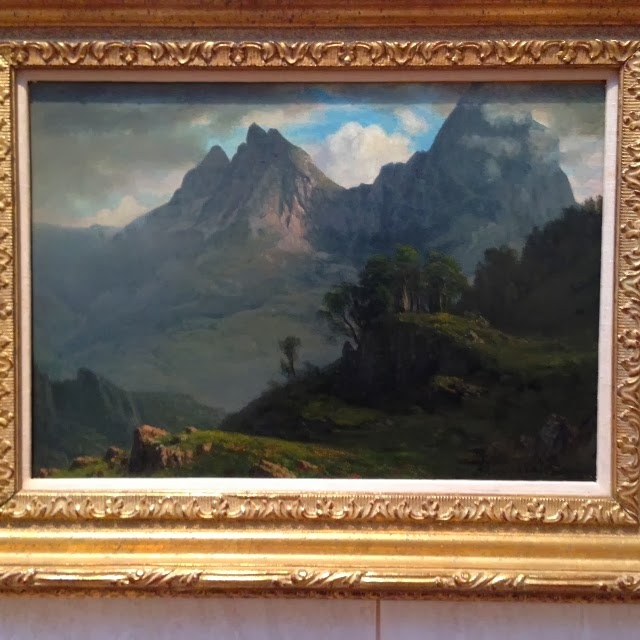Washington County Museum of Fine Arts Part II
Last week I was out at the Washington County Museum of Fine Arts in Hagerstown, MD. First time visitors often can hardly believe such a powerful Permanent Collection could exist in such a place. A few days ago I wrote a blog post about their newly renovated Singer Gallery and some of the work on display there now. Couldn't resist mentioning a few pieces hanging in the adjoining gallery in a show from the Museum's Permanent Collection.
Above is a stunning small oil on paper by Albert Bierstadt (American born in Germany 1830-1902), In the Rockies. Probably painted mostly from direct observation, Bierstadt's oil shows us a masterful use of silhouetted mountain peaks for emotional impact. The artist tones down all the contrasts in his warm colored foreground, urging us on as our eyes scale the crisply etched cool bluish cliffs. Bierstadt tells you where he wants you to look.
Thomas Cole (Am. 1801-1848) Study for "The Voyage of Life: Childhood", oil on canvas.
A generation older than Bierstadt, Cole was the galvanizing force behind America's first stylistically consistent movement in painting, the landscape art of the Hudson River School. Prodigiously productive, Cole turned out an amazing number of paintings in his short 47 year life. That they had such an impact can be sensed in the drama in this study for his famous Voyage of Life series of four canvases. Here he is figuring out how to convey the wonder and the promise of new life with an infant raising its arms in excitement as an angel's steady hand on the helm guides the small craft.
One of Cole's strengths in this painting is how he groups the baby and the angel together as one large light colored shape surrounded by all dark forms. Visually, as well as symbolically, the infant and the angel on on the same team.
Cropsey was another of the so called 2nd generation Hudson River School artists. He loved the russet colored foliage of Fall. In a painting like this Cropsey has first covered his entire canvas with a reddish underpainting that holds the wide open vista together. Even the sky, his coolest color area, has primarily shades of warm grays and oranges. What I believe the artist was after was a vision of an almost mythical unity of the heavens and the earth.
The Hudson River artists were terrific draughtsmen. Part of expressive drawing involves having a variety of edge qualities to the forms. Both at the left side and the right side of his composition Cropsey deftly sharpens up just his favorite shapes and lets everything else soften into a mist-like reverie.
It's fun to compare the stern and brooding Bierstadt mountain oil above with the softly beckoning warmth of Cropsey's world. Our inner lives know both those feelings. In paintings like these we see reflections of ourselves.





